Education and Economic Growth: The Role of Institutions
Education is one of key components of human capital, i.e. workers’ knowledge, abilities, and skills influencing their labour productivity. For this reason, many economists regard education as a crucial driver of economic growth.
That said, empirical estimates of education’s impact on growth are not always significant or even positive. One explanation for this paradox lies in a weak institutional environment that fails to facilitate the efficient application of acquired knowledge, thereby undermining its positive impact on the economy.
The institutional environment is also a widely recognised contributor to economic growth. Nevertheless, the comparative importance of education versus institutions remains debated. Some researchers assign a key role to institutions, arguing that they create incentives, including those for investment in human capital. Others prioritise human capital, viewing its development as the foundation for institutional improvements. It is probable, though, that these two perspectives describe a broader picture where institutions and education evolve while influencing each other: strong institutions support demand for better education, while a higher level of education creates demand for more efficient institutions.
Indeed, our analysis of data from 134 countries over the period from 1970 to 2015 confirms a rather strong relationship between institutions and education. Countries with weak institutions tend to have low levels of education, whereas higher educational attainment is associated with stronger institutions.
This relationship is observed in almost all countries, with only occasional exceptions. In our study, we focus on these anomalies, i.e. cases where the expected relationship between institutions and education is disrupted, and examine their implications for economic growth.
The key finding of our research is that both the level of education and the quality of institutions prove to be significant determinants of economic growth across all country groups. Notably, weak institutions substantially restrain economic growth even in countries with high educational attainment. Each point of institutions’ underperformance (on a 10-point scale; see the box below) reduces growth rates by approximately 1.5 pp compared to countries with similar education levels but stronger institutions.
How often can we observe one factor significantly outpacing another in development? For the period from 1970 to 2015, instances where institutional development exceeded educational attainment account for 1.3–2.1% of all ‘country – year’ observations, occurring in 9 countries (7% of the sample). For example, these imbalances are typical of Hong Kong and Singapore prior to the 2000s. Both states consistently ranked among the world’s most economically free countries throughout the whole 45-year study period, having established their institutional frameworks while they were still British colonies. The second half of the 20th century saw both economies rapidly accumulate human capital – a process that eventually became a primary growth driver and reduced the development gap between institutions and education by the 2000s.
Contrastingly, instances where countries have high education levels but weak institutional environments are a more frequent imbalance scenario, accounting for 4.2–5% of all observations and occurring in 18 nations (13% of the sample). This is associated with the fact that the years under study cover the transition period of post-socialist countries, although most of them have since addressed their substantial institutional constraints. Furthermore, such an imbalance towards education may emerge due to an abrupt deterioration of an institutional environment during major socio-economic and political crises, with Argentina, Venezuela, and Zimbabwe serving as examples. A number of research papers note that a similar imbalance can still be observed in Russia (1, 2, 3, and 4).
Features of the relationship between institutions and education
Studies show that institutions can determine both the nature of accumulated human capital and the way it is utilised. For example, Douglass North, an influential representative of New Institutional Economics, noted that institutions create incentives for the accumulation of human capital that is in demand in a specific institutional environment. Knowledge and skills are essential for both a successful pirate and a skilled chemist, although the former applies them to ‘redistribute wealth’, while the latter uses them for productive economic activity.
In 1991, University of Chicago professor Kevin Murphy, his colleague Robert Vishny, and Harvard professor Andrei Shleifer proposed a model demonstrating that the occupational choice depends on the returns in the productive and the rent-seeking sectors of the economy. To estimate the rent-seeking sector size, they used the proportion of law students and the productive sector size was calculated on the base of engineering students share. The authors of the study demonstrated that a higher proportion of law majors is associated with lower economic growth rates, whereas a higher proportion of engineering graduates is correlated with higher economic growth. A similar study conducted by Leonid Polishchuk and Timur Natkhov in 2019 confirmed that the quality of institutions remains the primary factor determining the choice between the productive and the rent-seeking activity.
Research shows that even with high educational attainment, weak institutional environments can adversely affect other components of human capital, namely by reducing the quality of education, restraining knowledge accumulation and skill acquisition during professional careers, and driving brain drain. To varying degrees, these challenges are likely to be observed in countries with significant imbalances towards education.
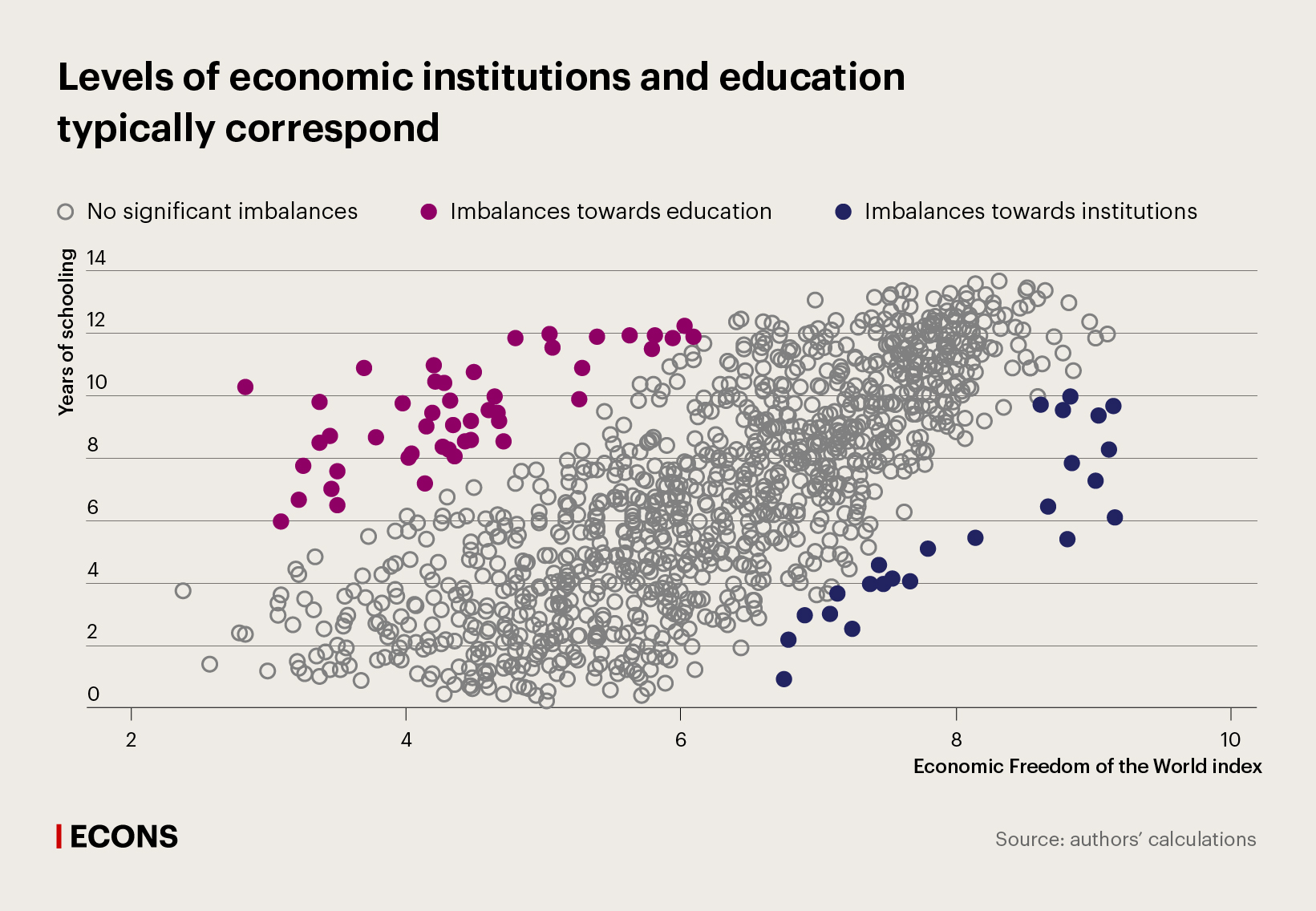
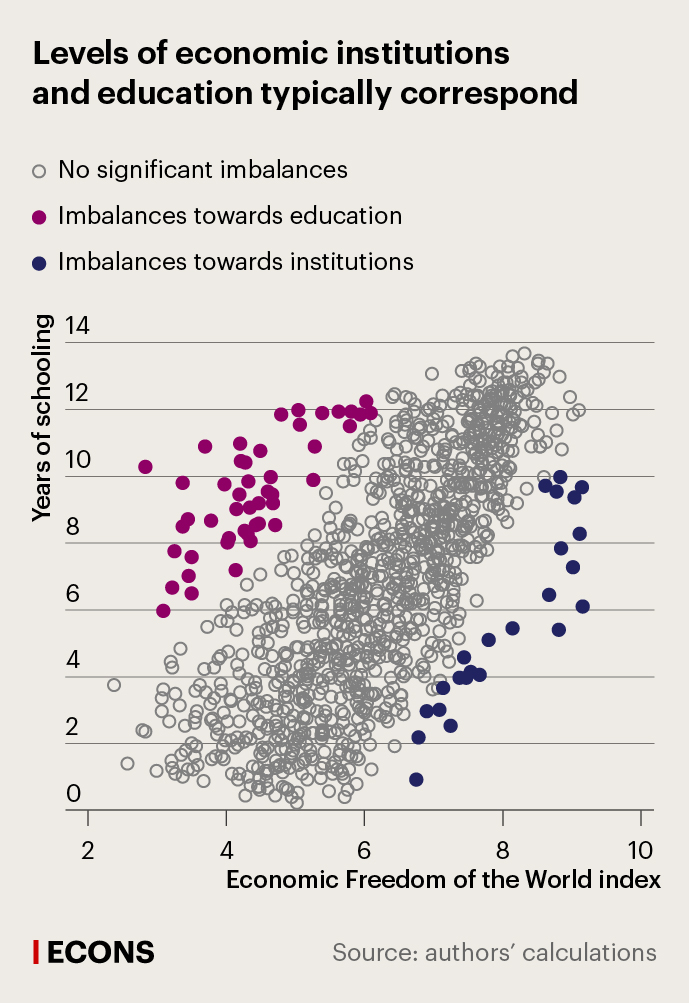

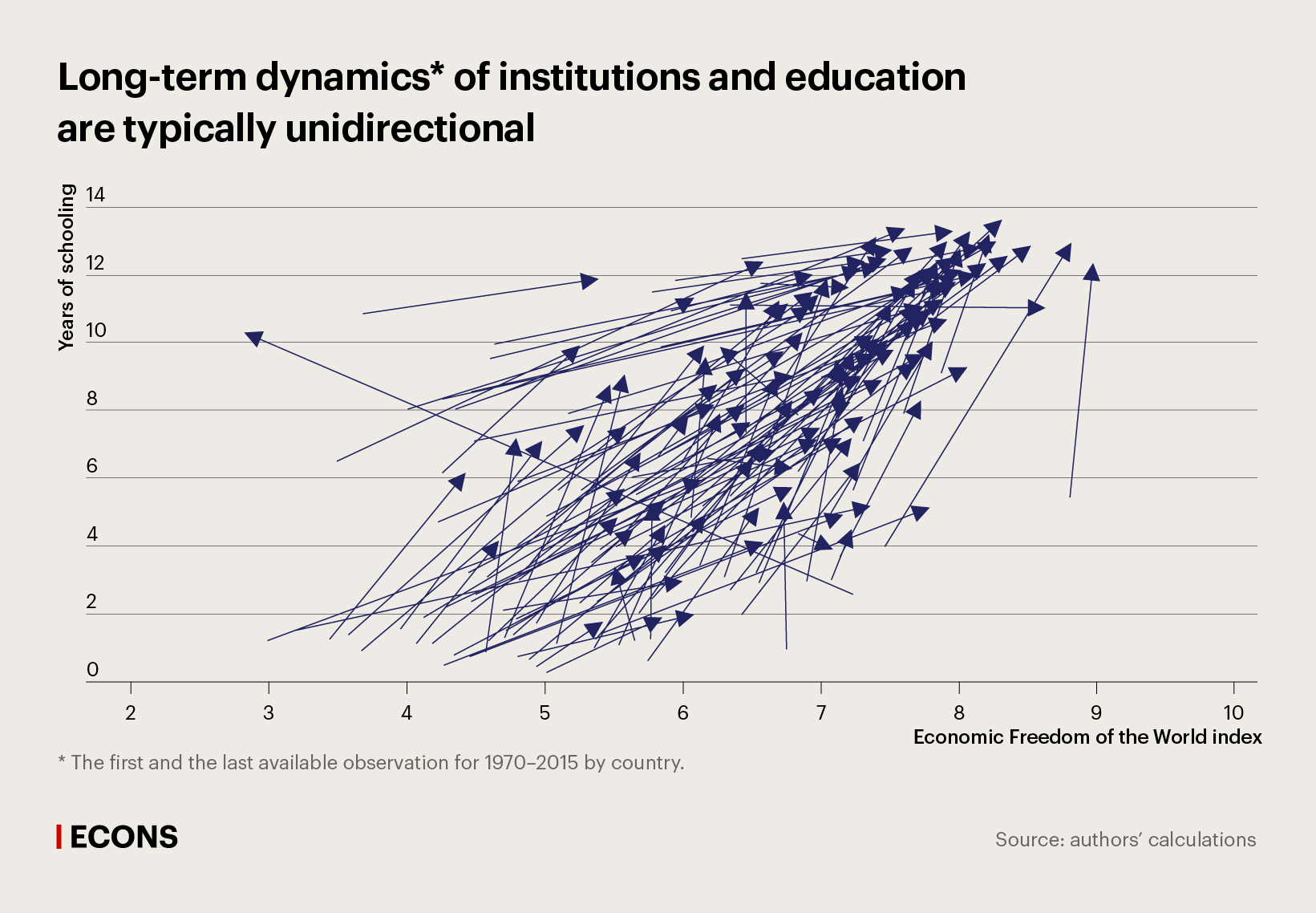
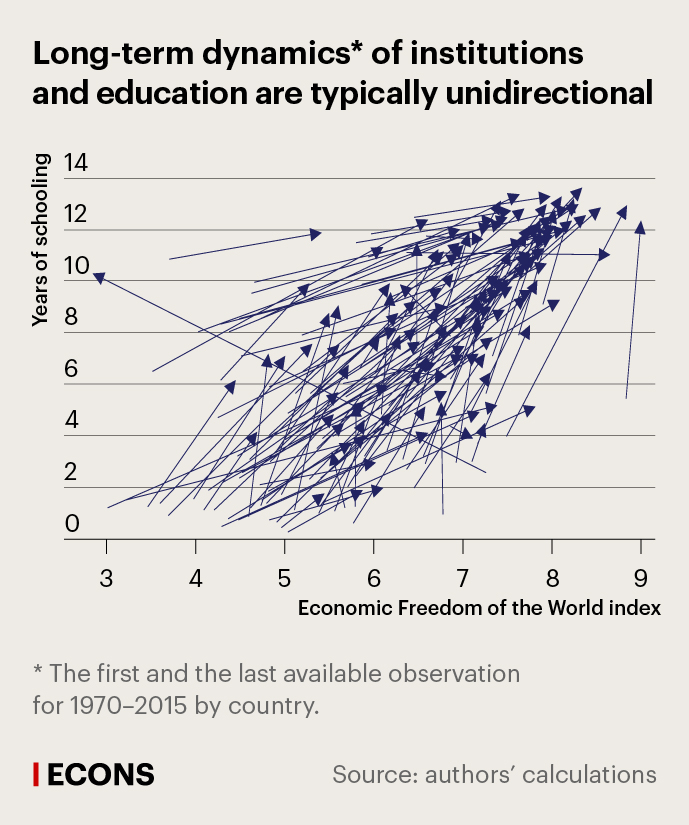
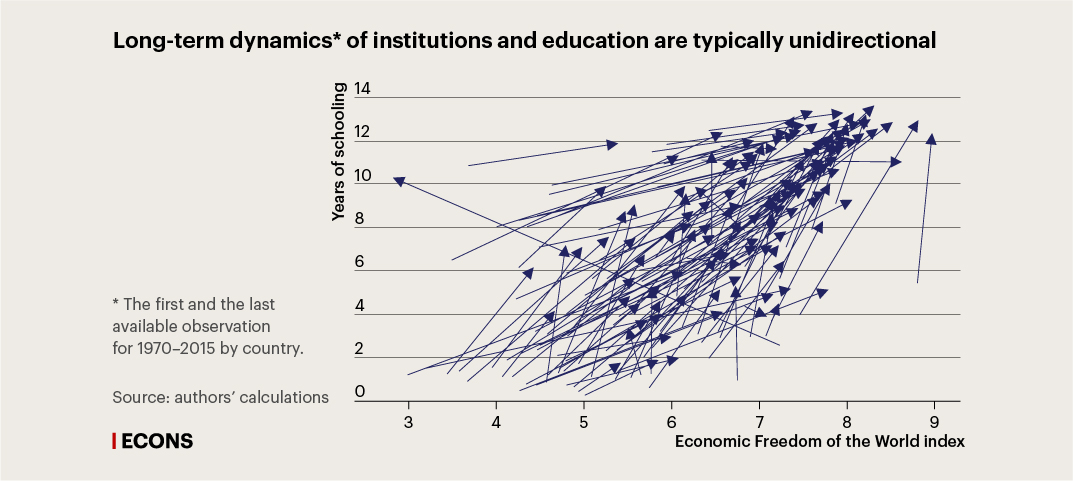
At the same time, an institutional environment can change more rapidly than an education level. Such imbalances typically emerge and disappear due to relatively fast changes in economic institutions (caused by crises or reforms), whereas raising a population’s overall education level requires a long time, although a partial devaluation of accumulated knowledge (e.g. resulting from a crisis) may also occur swiftly (link in Russian). Therefore, the ‘high education level – weak institutions’ imbalance is common for countries that have experienced a sharp deterioration of their institutions. By contrast, the ‘low education level – strong institutions’ imbalance is rarer and usually diminishes as educational attainment improves.
Role of education in different institutional environments
Our estimates confirm that both institutions and education significantly and positively impact economic growth, thus playing a crucial role in determining a country’s economic prospects. A one-year increase in the average years of schooling is associated with a 1.1 pp acceleration in GDP per capita growth. A one-point rise in the Economic Freedom of the World index corresponds to a 1.5 pp faster growth rate. However, such significant changes typically require substantial time.
To examine whether the impact of education on economic growth depends on the quality of institutions, we incorporated interaction effects in our calculations. While several studies (1, 2, and 3) demonstrated this correlation, our panel data analysis did not confirm this result.
On the one hand, this could be attributed to the fact that an improvement in an institutional environment leads not so much to a greater impact of education on economic growth, but rather to an increase in the average years of schooling, which in itself has a positive effect on growth rates.
Another possible reason is that in countries with strong institutions, complex human capital that cannot be measured by years of formal education, e.g. knowledge and skills acquired during professional careers, plays a more important role. A decline in the microestimates of returns on education as countries achieve higher educational attainment and greater economic development also indirectly points to a limited economic role of education.
That said, the absence of significant interaction effects at the macrolevel does not negate differences in the economic role of an educated population employed in a strong and in a weak institutional environment. Such disparities are likely to become visible in more detailed analyses. The mechanisms linking institutions and human capital may take complex, non-obvious forms, and only further research can clarify their nature.
To sum up, the findings demonstrate that even in an unfavourable institutional environment, education can still have a positive impact on economic growth. However, in countries with high education levels but weak institutions, growth rates will be lower than in those with comparable education levels but less pronounced institutional constraints.
While institutions and education normally complement each other, an imbalance occurs when the level of education is outpacing institutional development. In this case, institutions act as a factor limiting economic growth, thus preventing the full realisation of the educated population’s potential. Weaker institutions explain low economic growth rates in a number of countries with high educational attainment.
The full text of the study is published in the journal Voprosy Ekonomiki, 2025, No. 8.









